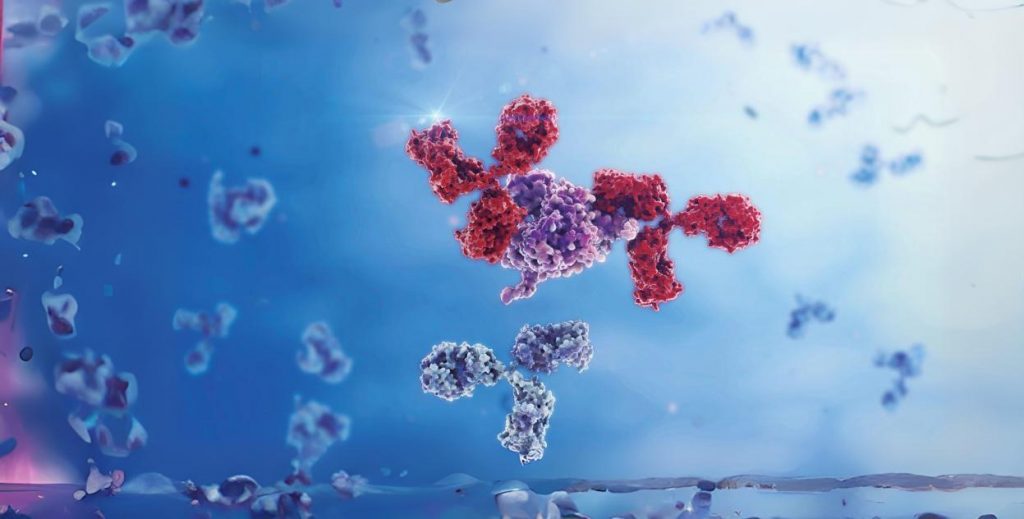Targeted Protein Degradation: A Potential Tool for Discovering Druggable Targets
 5 years ago
By Charlotte Di Salvo
5 years ago
By Charlotte Di Salvo

Drug discovery is the first step in therapeutic breakthroughs. Unfortunately, this cannot occur without target discovery – the identification and validation of druggable targets. Whether it be proteins or small molecules, discovering a ‘druggable’ biological target can be a challenge for more complex diseases. Targeted protein degradation is making ground-breaking strides in targeting ‘undruggable’ targets, opening the door for therapeutic intervention not previously thought possible.
For daily articles on the latest pharma trends and innovations, as well as interviews with leading experts and in-depth industry White Papers, subscribe to PharmaFeatures.com.
Introduction to target protein degradation
Despite therapeutic antibodies and small molecules demonstrating success across a number of therapeutic areas, there continue to be a number of challenges. Firstly, due to the mechanism of action, antibodies cannot penetrate into cells targeting proteins within. Secondly, developing small molecule inhibitors against proteins that do not possess enzymatic activity is a challenge. Inhibiting enzyme activity is one of the primary ways of targeting proteins with conventional pharmacology, hence many intracellular proteins without enzymatic activity are unable to be targeted by antibodies and small molecule inhibitors, and they are sometimes called “undruggable targets”.
There is accumulating evidence suggesting that induced protein degradation represents a promising approach to make “undruggable targets” druggable.
Targeted protein degradation (TPD) is the breakdown of protein by small molecules, who hijack the cellular machinery for ubiquitylation, resulting in ubiquitylated proteins which are subjected to degradation. Ubiquitylation refers to a post-translational modification by which ubiquitin (a small protein) is attached via a bond to lysine (amino acid) residues on a protein.
There are three classes of degrader molecules which induce the breakdown of target proteins. The first class is a single-ligand molecule that directly interacts with the target protein to induce degradation. The second class of small molecules are single-ligand molecules which interact with a class of enzymes known as E3 ubiquitin ligases. This modulates substrate selectivity for enzymatic mechanisms. The final class is a chimeric molecule, developed under names such as PROTACs and SNIPERs. These are designed to “crosslink the target protein and an E3 ubiquitin ligase to induce the degradation of the target protein”.
TPD in drug development
TPD technology has been described as a novel drug discovery paradigm in which specific drivers of human disease are selectively targeted for degradation by the cell’s own proteolytic machinery rather than inhibiting or modulating their cellular function. In other words, small molecules such as those in the classes above manipulate the specific mechanisms within a cell to inhibit intracellular targets like enzymes or protein function.
There are numerous advantages of TPD over small molecules inhibiting cell function. Firstly – dosing. In a 2018 review, small molecule PROTACs have displayed nanomolar potencies in rapidly degrading target proteins, causing in vivo tumour suppression. It is highly desirable to facilitate the intended therapeutic effect with as low a dose as possible, in order to reduce the likelihood of side effects for patients.
Secondly, targeted protein degradation can address the challenge of drug resistance, a problem with small molecule inhibitors (SMIs). The degradation of proteins rather than inhibition means PROTACs have a great superiority in overcoming resistance caused by target mutation or overexpression when compared with SMIs. This function also facilitates the breakdown of ‘undruggable’ protein targets.
According to a 2020 article, there are up to 650,000 ‘undruggable’ protein-protein interactions in the human interactome. These could all be considered as novel therapeutic targets, offering hope for diseases with complex pathology or high levels of drug resistance.
In June 2016, Boehringer Ingelheim and the University of Dundee began a collaboration for a successful PROTAC programme to further drug development in oncology. It was highlighted that while the application of PROTACs has expanded significantly, the designing of PROTACs remains challenging. According to an article by the University of Dundee, the partners developed a “structure-based design approach as a solid basis to accelerate further development”.
In this article, it highlights their recent approach using “3-dimensional pictures at atomic resolution to design highly potent and selective drug candidates”. This novel approach resulted in the first PROTAC to break down SMARCA2, a protein driving tumour growth seen in more than 20,000 new cancer patients each year. This furthers understanding of the PROTAC mechanism and how it can translate to targeting ‘undruggable’ targets.
Challenges
Despite their potential success, these molecules are still relatively large in comparison with traditional small molecules – thus may not be orally bioavailable. Drug delivery systems play a significant part in both therapeutic effect and patient uptake for treatment. For example, paediatric cancer patients are less likely to tolerate a drug administered via IV or injection versus oral drugs.
Another problem is that it is very difficult to accurately evaluate the pharmacokinetics (PK) and pharmacodynamics (PD) properties of PROTACs. Pharmacokinetics and dynamics is a crucial part of drug efficacy, and constitutes how a drug behaves in the body with regards to metabolism, bioavailability, distribution and excretion.
This creates two main issues: (1) the desired therapeutic effect cannot be achieved with poor bioavailability and distribution, hence it is important to understand the pharmacokinetics to optimise these components, and (2) the mechanism by which drugs are metabolised and excreted from the body determines the likelihood of side effects and potential toxicity.
Therefore it is essential to develop assays which can accurately assess these properties in order to ensure the drug achieves the desired therapeutic effect with minimal side effects.
While this area of drug development shows potential, it is relatively new in the scope of target discovery. As of 2020, approximately 50 proteins have been developed, among which “two compounds are currently in clinical trials to treat therapy-resistant prostate and breast cancer”. However, the significant advantages of targeted protein degradation with regards to dosing, drug resistance and side effects represents an exciting next step for therapeutic developments
To discuss these topics further with sector experts, and to ensure you remain up-to-date on the latest in clinical development, sign up for Proventa International’s Medicinal Chemistry and Biology Strategy Meeting, set for 29 June 2021.
Charlotte Di Salvo, Junior Medical Writer
Proventa International

Navigating the Complex World of Global Regulatory Affairs in Oncology
In today's fast-paced global pharmaceutical landscape, the regulatory affairs sector plays a pivotal role in ensuring the safety, efficacy, and market access of oncology drugs. As the demand for innovative cancer therapies continues to grow, understanding the intricacies of global...
2 years agoNavigating the Complex World of Global Regulatory Affairs in Oncology
In today's fast-paced global pharmaceutical landscape, the regulatory affairs sector plays a pivotal role in ensuring the safety, efficacy, and market access of oncology drugs. As the demand for innovative cancer therapies continues to grow, understanding the intricacies of global...
2 years ago
Overcoming the Hurdles: Navigating the Challenges in Oncology Clinical Trials
In the world of medical research, oncology clinical trials are at the forefront of innovation and discovery. These trials play a crucial role in advancing our understanding of cancer and developing more effective treatments. However, the path to successful oncology...
2 years agoOvercoming the Hurdles: Navigating the Challenges in Oncology Clinical Trials
In the world of medical research, oncology clinical trials are at the forefront of innovation and discovery. These trials play a crucial role in advancing our understanding of cancer and developing more effective treatments. However, the path to successful oncology...
2 years ago
Embracing a Patient-Centric Approach in Oncology Trials
In the realm of healthcare and medical research, the term "patient-centric" has gained significant traction in recent years. This shift in focus towards prioritizing patients' needs and preferences is not only transforming the healthcare industry but is also making waves...
2 years agoEmbracing a Patient-Centric Approach in Oncology Trials
In the realm of healthcare and medical research, the term "patient-centric" has gained significant traction in recent years. This shift in focus towards prioritizing patients' needs and preferences is not only transforming the healthcare industry but is also making waves...
2 years ago